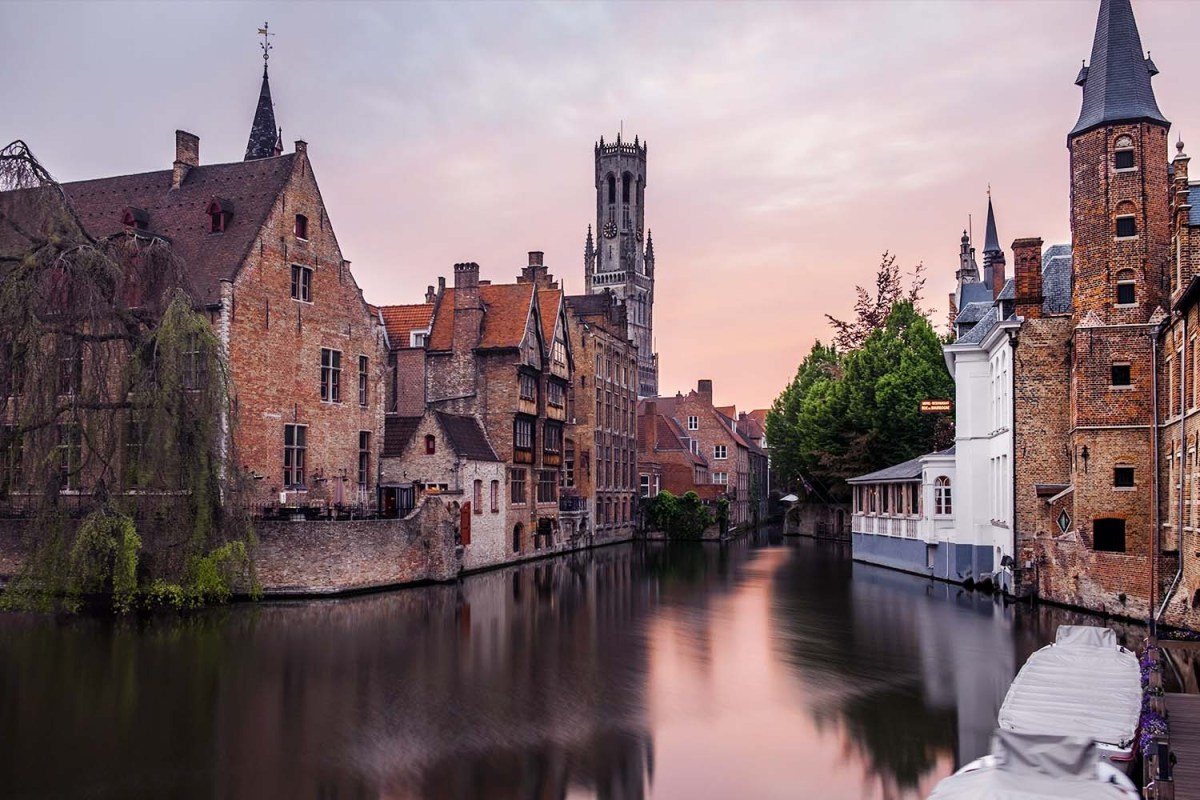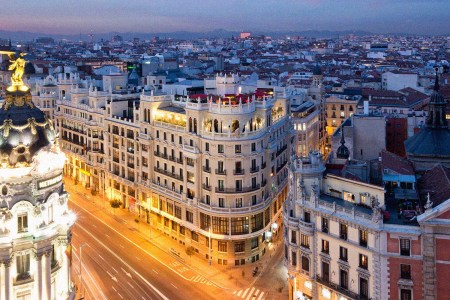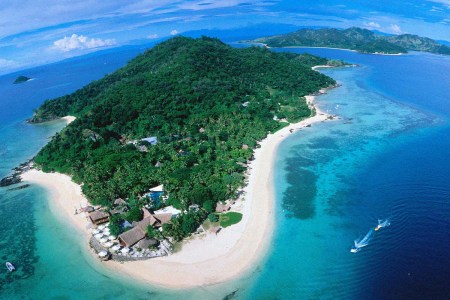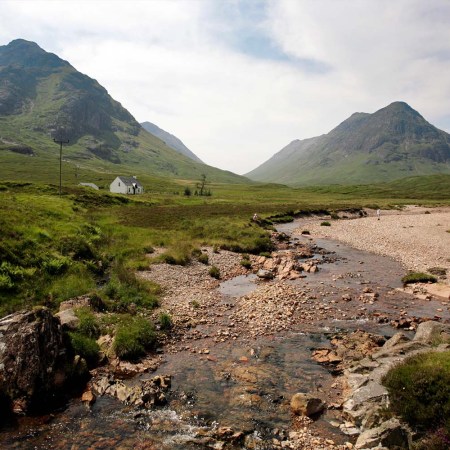When deciding where to visit in Western Europe, most travelers immediately pinpoint destinations in France and Spain — and maybe mention Portugal in the same breath as its neighbor. Others key in on Amsterdam as a fun getaway and gateway to the rest of the continent. Likewise for London. Luxury lovers flock to Monaco, while Scotland draws hiking enthusiasts. But, as someone who recently returned from Belgium, I’m here to say that the country deserves way more tourism cred.
Sure, basically everyone has tasted its most popular exports — chocolate, waffles, fries and beer — but enjoying those things in the place that perfected them just hits your tastebuds differently, and the regional cuisine, from Flemish specialties like cheese croquettes to French favorites such as vol-au-vent, is a treat as well. As a sort of cultural crossroads, Belgium also brims with outstanding art and architecture, and it’s extremely well connected by rail, making it totally doable to hit a few different cities. Of course, the ease of train travel also means you could pick a single home base and just do day trips, but I prefer splitting the time and getting to check out different hotels, too.
While Brussels is worth an overnight, for this particular itinerary I’ve opted for just a quick trip at the end (if you have a few extra days to spare, do consider spending the weekend in the bilingual capital) in order to maximize every minute in the less-frequented — equally fascinating — locales. Belgium’s coolest city Antwerp is best known for its sparkling diamonds, but also shines bright with boutique shopping, galleries, hip restaurants, cocktail bars and boutique hotels. Bruges looks like a storybook and oozes heritage going back to the medieval ages. Ghent falls under the radar but should be lauded for its mix of old-world splendor, youthful exuberance and a shockingly awesome veg-forward food scene.
Ready for a week filled with cultural and culinary delights? Here’s how to make the most of your time in Belgium.
Getting to Belgium
Because the capital of the European Union is so centrally located, its airport receives a ton of international arrivals (the same goes for departures) each day and it’s a major hub of rail travel as well. From Brussels, it’s just a short, 45-minute train ride to Antwerp. Alternatively, if you’re coming from Amsterdam, Thalys operates a direct route to the diamond-centric city that takes just 75 minutes and costs about $85. (We did this a few months ago and it was super easy.)
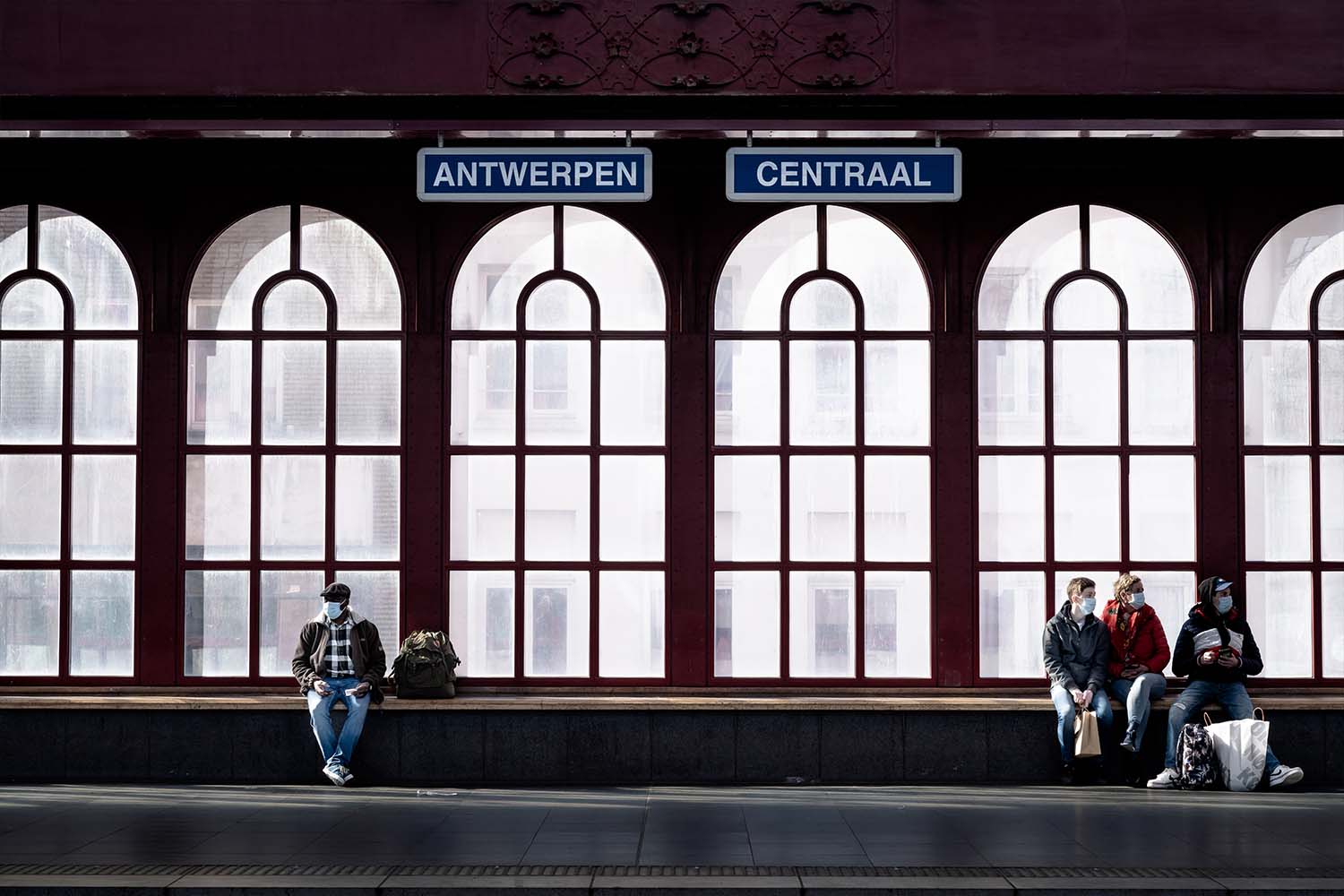
Day 1: Antwerp

Stay: Hote De Witte Lelie
Hote De Witte Lelie is a jewel-box lodging and member of Small Luxury Hotels set inside a trio of historic gabled houses. All of the rooms and suites are individually decorated with colorful, eccentric flair that leans into a sense of homespun hospitality and the original features of the buildings. The old-school character also shines bright in the ground-floor common spaces that entice guests to hang out longer with fireplaces and plush seating.

Do: Antwerp’s Diamond District
After taking a few moments to appreciate the grandeur of Antwerpen-Centraal railway station, stroll over to the famous diamond district, which covers about one square mile. While I’m not suggesting that you blow your entire vacation budget on earrings or a tennis bracelet on the first day, it’s still fun to look at all the sparkling jewels in the windows.

Eat: De Peerdestal
De Peerdestal isn’t just situated near many key sights, it’s a landmark in its own right. This storied, reservation-required restaurant reflects its more than two-decade pedigree as a culinary bedrock of Antwerp with brick walls and red leather seats where notable names, locals and tourists have sat comfortably to munch on steak and seafood. To wash it down? Belgian beer, wine and cocktails.

Do: De Ruien
An utterly unique, only-in-Antwerp activity is to take a guided tour of De Ruien, the fascinating complex system of subterranean canals, medieval vaults, bridges and sewers that run underneath the city. If you’d rather not do the muddy walk, or are traveling with little ones under 10 years old, there’s a kid-friendly boat ride option.

Do: Grote Markt
The heart of the old city, Grote Markt is the central square that’s lined with storied landmarks — among them the Renaissance-style Antwerp City Hall, the Guildhalls of Sint-Joris and Brabo Fountain — restaurants and shops. It’s a lovely place to walk around and steep in the history, stop for something to eat or drink at a cafe and perhaps grab a sweet treat at one of the many chocolatiers.

Eat: Bistro Ernest
While Antwerp is located in the northernmost province of Flanders, Ernest Bistro draws inspiration both from its Flemish surrounding and the French side of Belgium with a menu that reflects the breadth of the country’s culinary scene. It’s traditional in the best possible way and so delicious. And, again, like so many of the smaller eateries around the city, it’s very much a reservation-required spot.

Drink: Jones & Co
Belgium may be a country renowned for beer but that doesn’t mean you’ll regret cozying up for a craft cocktail at Jones & Co, a pint-sized drinking den with exposed brick walls, an intimate atmosphere and live music on Wednesday nights.
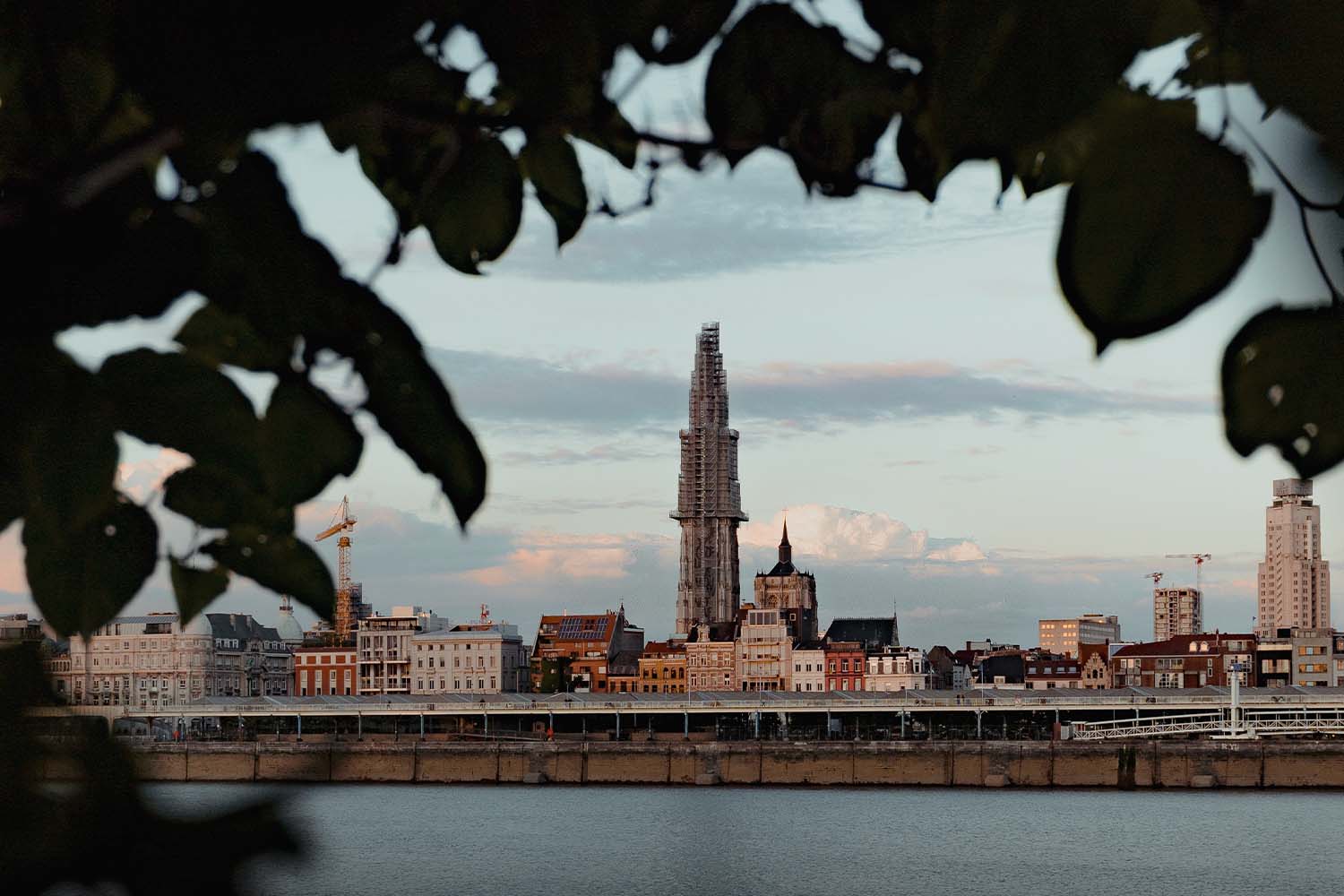
Day 2: Antwerp

Do: Royal Museum of Fine Arts Antwerp
Allocating time to the rich artistic legacy of the city — and, beyond that, Belgium — is essential for really getting a sense of the place you’re visiting. Founded in 1810, the Royal Museum of Fine Arts Antwerp presents the perfect opportunity to admire the collection of paintings, sculptures and drawings that date between the 14th and 20th centuries.

Eat: Visbistro Mojo
The Royal Museum of Fine Arts Antwerp is a short walk from one of my favorite restaurants in the city, Visbistro Mojo, an upscale yet super relaxed eatery that specializes in “fruits de mer” (French for shellfish) — though, its artistry broadens to basically everything that comes from the ocean. The seafood towers look like works of art. But truly, everything is excellent. It’s a place where the simplicity and quality of the product shine. That extends to the wine that pairs so perfectly with the food.

Relax: Botanic Sanctuary Antwerp
A member of Leading Hotels of the World, Botanic Sanctuary Antwerp is an absolutely beautiful monastery turned elegant retreat with a penchant for biophilic design. There’s a serene health spa with modern facilities — including a swimming pool, saunas and steam rooms — and holistic treatments. If you’re not in the mood for that level of self-care, maybe just order a cup of tea or a cocktail in the garden-facing conservatory restaurant.
How to Spend 7 Perfect Days in Madrid
World-class galleries, bohemian café culture and glamorous nightlife – here’s how to make the most of a visit to the Spanish capital.
Eat: Have a Roll
Vegan cinnamon rolls are a thing in Antwerp. I’m honestly not sure why but have learned not to question something so delicious. My favorite spot for sticky, sweet pastries is Have a Roll. Obviously, you can’t go wrong with the classic. Chocolate and pecan caramel are totally addictive. (Dessert lovers rejoice! There are outposts in Ghent and Brussels, too.)

Do: Shop
Nearby, you’ll find some of the best high-end shopping in the city. Upmarket and designer brands — among them Chanel, Moncler and Sandro — line Schuttershofstraat and the neighboring streets. More in the market for vintage threads? Head to Think Twice.

Eat: De Arme Duivel
The manager of Hote De Witte Lelie suggested De Arme Duivel, so we already knew it would be great going into our meal. Pushing back the thick curtain and entering this storied pub-meets-restaurant transports you back in time with its old-school benches and dumbwaiter food delivery system. The classic Flemish dishes such as vol-au-vent, cheese croquettes and beef stew are warm and comforting like a homecooked meal just prepared by a talented chef.
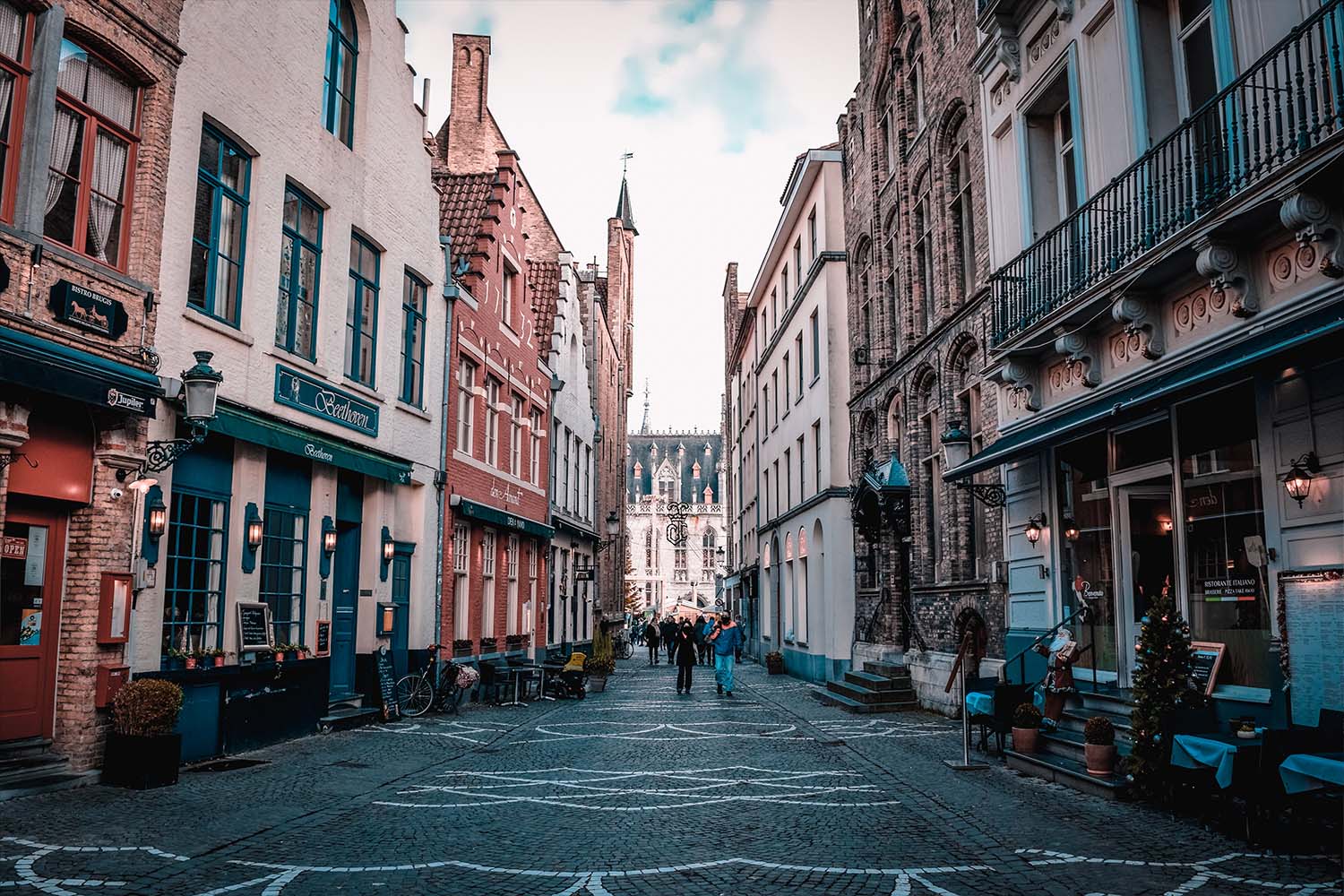
Day 3: Bruges

Stay: Hotel de Orangerie
Hotel de Orangerie, another enchanting Belgium member of Small Luxury Hotels, charms visitors from its canalside perch in the heart of Bruges. Set inside a Carthusian convent dating back to 1580, this picturesque property reflects the history its home. The past and present intermingle in a really lovely way with heritage-rich furnishings in the oak-paneled dining room and cozy bedrooms as well as an atmospheric terrace that looks like it was designed to meet the needs of over-scheduled modern travelers in a need of some waterfront relaxation.

Transport: Train
Hop on Rail Europe and in less than 90 minutes (and for about $20), you’ll arrive in Bruges.

Do: Walking tour
Bruges is very pedestrian-friendly and packed with beautiful medieval buildings. Legends of Bruges provide free walking tours that give visitors an up-close look at the most significant sights. It’s a great way to get your bearings and learn about the city at the same time.

Eat: TouGou Fijnproeverij
Sit down for a culinary standout meal at TouGou Fijnproeverij is a gourmet delicatessen of sorts with a takeaway counter where people can pick up charcuterie, cheeses, dips and prepared dishes. It also displays a handful of leather bench-backed tables along the white-washed brick wall — that’s the lunch restaurant portion of the setup. Dine-in patrons have the pleasure of savoring the specialty products in the case as well as a rotating menu of chef-created plates that lean into traditional flavors with unexpected international flair. The wine selection and service are wonderful, too.

Coffee: Coffeebar Adriaan
Rather than grabbing a coffee to go, sit down in one of the leather armchairs by the fire, order a frothy latte in a large mug and treat yourself to a slice of homemade cake. That’s the full experience of an afternoon pick-me-up at Coffeebar Adriaan

Eat: In ‘t Nieuw Museum
Travelers rave about In ‘t Nieuw Museum, an atmospheric eatery that’s been shining a spotlight on farm-to-fork food from local producers for decades. Steaks definitely steal the show. The wild salmon is another crowd-pleaser. Lovers of Belgium beer will be delighted to see the beverage list.
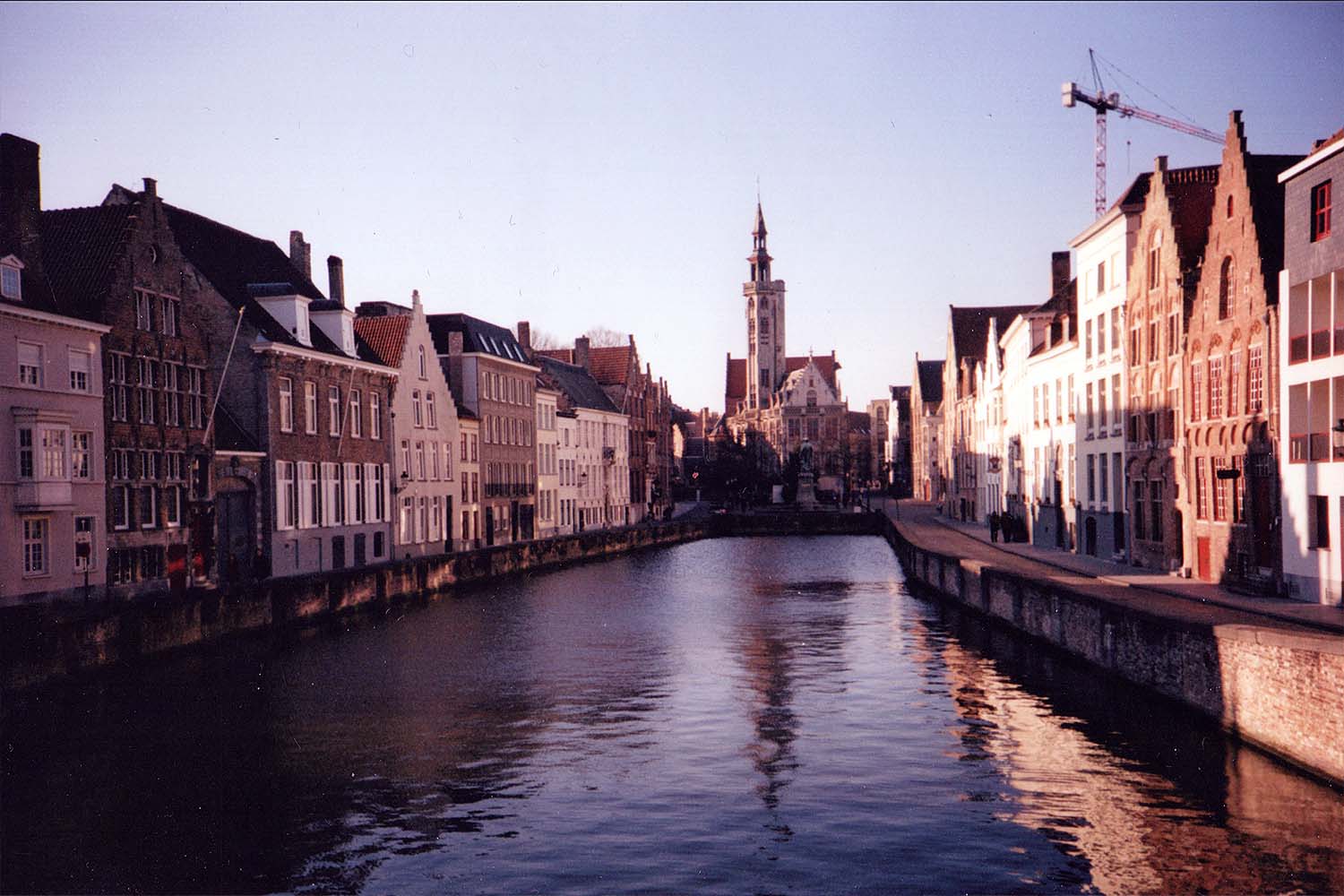
Day 4: Bruges

Do: Canal boat ride
The storybook capital of West Flanders has idyllic canals. And a ride along the waterways is one of the most enjoyable and scenic things to do while visiting. It’s such an enjoyable and leisurely way to learn about the history of the city, admire the Flemish architecture, and perhaps enjoy a brief moment of sunshine.

Eat: Boho Brunch
For a city so deeply rooted in the past, Bruge offers quite a surprising clutch of modern-minded breakfast spots. Boho Brunch is one of the most flocked to — no doubt because of its white-washed Tulum-meets-Queensland interiors and vibe to match. But, of course, the food needs to be good. And this Instagrammable eatery definitely delivers in that department, too. Just peep the photos of acai bowls, colorful toasts and plentiful salads (a nice healthy-ish departure from what’s likely to be a largely sausage and sweet-forward holiday), plus stacks of pancakes on social media.

Do: Climb the Belfy
Now that you’ve hit the key sights, it’s time to double back for some expanded exploration. One of the most iconic activities in Bruges (besides a horse-drawn carriage ride, but I have very conflicting feelings about that), is climbing the famous 13th-century belfry for panoramic views.
How to Spend 7 Perfect Days in Lisbon
The Portuguese capital is visually stunning with a heady mix of old and new. Here’s an expert guide to making the most of your visit.
Chocolate: Elizabeth Chocolatier
If you visit Belgium and don’t eat something sweet every day were you even there? Elizabeth Chocolatier has nine locations around the country and in Paris. I’m partial to the Bruges outpost inside a lovely brick building with a deep blue-painted shopfront on the corner of Market square.

Drink: Red Rose Cafe
An institution where (faux) red roses do really hang from the ceiling, Red Rose Cafe is the absolute perfect cozy bar to sip on a pint or a bottle of specialty beer (we tried a sour that certainly surprised my tastebuds). If you’re feeling peckish, the potato wedges are excellent — like maybe just go ahead and get two orders off the bat.

Eat: Locàle – by Kok au Vin
Locàle – by Kok au Vin feels like a place you’d go to impress a date or for a special occasion. It’s intimate, warm and refined. The food reflects that with items like sourdough bread with farm butter, freshly shucked oysters and house-cured meats. The expertly curated wine list elevates the experience even further.
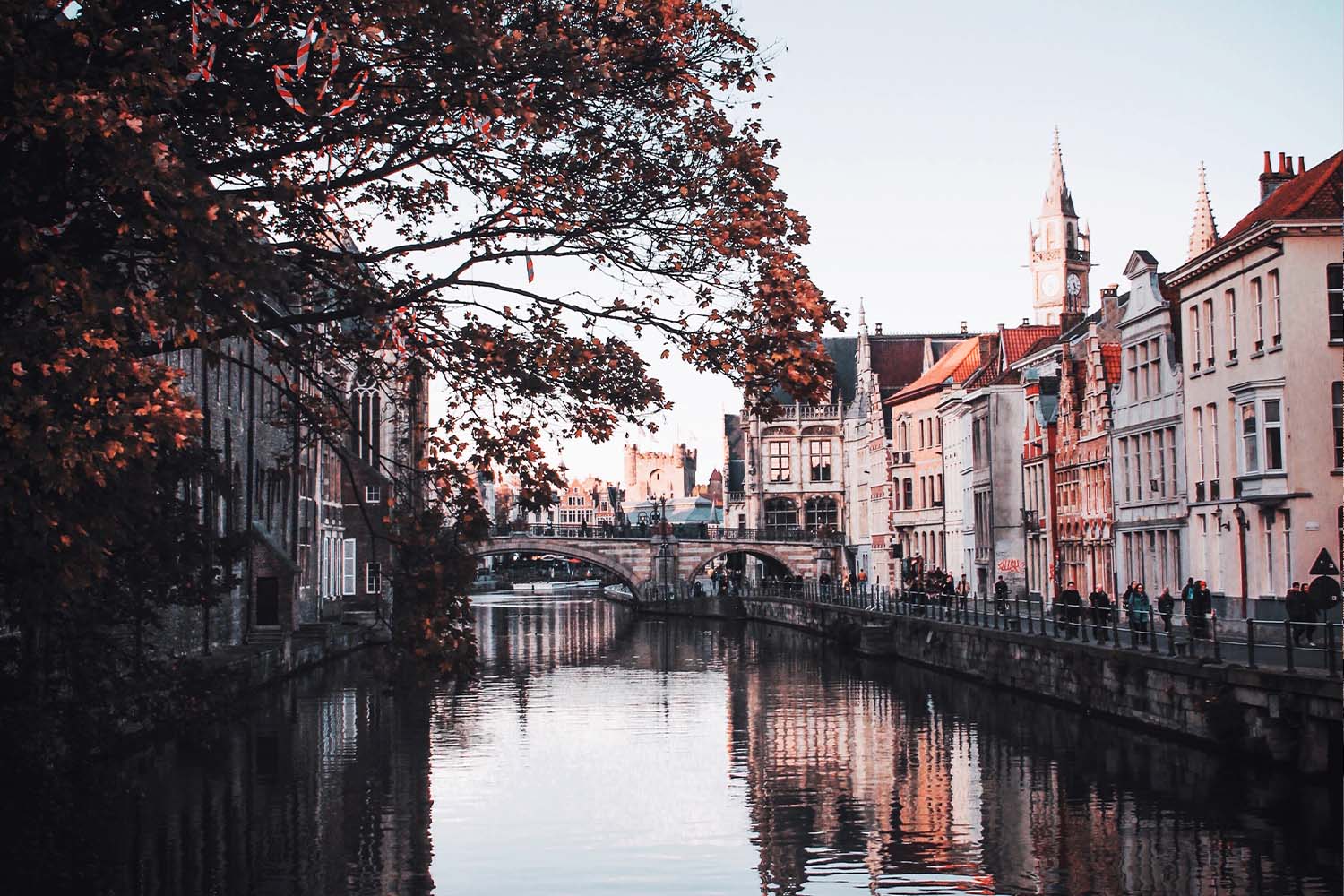
Day 5: Ghent

Stay: 1898 the Post
Cleverly concealed inside a neo-gothic landmark that used to be the city’s head post office, 1898 the Post offers guests a prime location between Korenmarkt Square and Graslei as well as heaps of old-timey postal-inspired details. Paperweights, pencil boxes and paper that looks like it’s from yesteryear sit atop antique writing desks. Built-in bookcases filled with vintage volumes, rotary phones and framed photos of sketches of the building reinforce the heritage feel. The bathrooms give off understated luxury vibes with heated floors. Some have separate soaking tubs and showers.

Transport: Train
Rail Europe operates dozens of trains between Bruges and Ghent daily. The trip takes less than 45 minutes and costs just $10.

Do: Cathedral of St. Bavo
Situated on Sint-Baafsplein, the imposing Cathedral of St. Bavo cuts quite a striking figure. The interior of the historic parish church speaks to the city’s artist pedigree and shows off many Flemish paintings, including The Conversion of St. Baaf altarpiece by Peter Paul Rubens, murals and chandeliers as well as the ornate tombs of bishops past.

Do: Het Belfort van Gent
Soaring nearly 299 feet and guarded by a fiery dragon, Het Belfort van Gent has long stood tall as a proud symbol of the city’s independence. Besides admiring the artistry of this sky-high landmark and listening to the chiming of the carillon, visitors can climb (or take the lift from the first floor) to the top for sweeping panoramas.

Eat: BOON
BOON is a bustling vegetarian cafe right across the street from Gravenstein. It’s quite popular for breakfast and lunch. Though you’re bound to find tables full of happy diners digging into bountiful salads, soups with organic sourdough bread, quiche, sandwiches, and homemade desserts all throughout the day.
How to Spend 7 Perfect Days in Fiji
An archipelago of more than 300 islands, you could spend a lifetime exploring Fiji. Our writer found the best way to do it in just a week.
Do: Gravenstein
Gravenstein is a highlight of any trip to Ghent. This storybook 12th-century castle used to be the residence of the Counts of Flanders until 1353 and later served many functions — among them a court, prison (you can see evidence of this period in the basement) and a mint. The corridors, tower stairs, large rooms, intricate details like stained glass windows, battlements and views from the top are really impressive. I highly recommend doing the comedic audio tour. It’s humorous and packed with historical anecdotes. Pro tip: skip the queue by reserving tickets online in advance.

Eat: Epiphany’s Kitchen
It might sound sacrilegious to recommend another vegan eatery in the land of mussels, sausages and stew, but plant-based cuisine is such a point of pride in Ghent. Plus, Epiphany’s Kitchen stands out as one of the most visually stunning restaurants I’ve ever stepped inside. It sort of looks as if a grand mansion fell into disrepair and then someone put painstaking effort into restoring its former resplendence for a fabulous dinner party. Painted plaster walls, flowers hanging from exposed wood ceilings, tables adorned with flickering candles and velvet chairs — it’s all so gorgeous! The food skews healthy with gluten-free pasta and pizza.
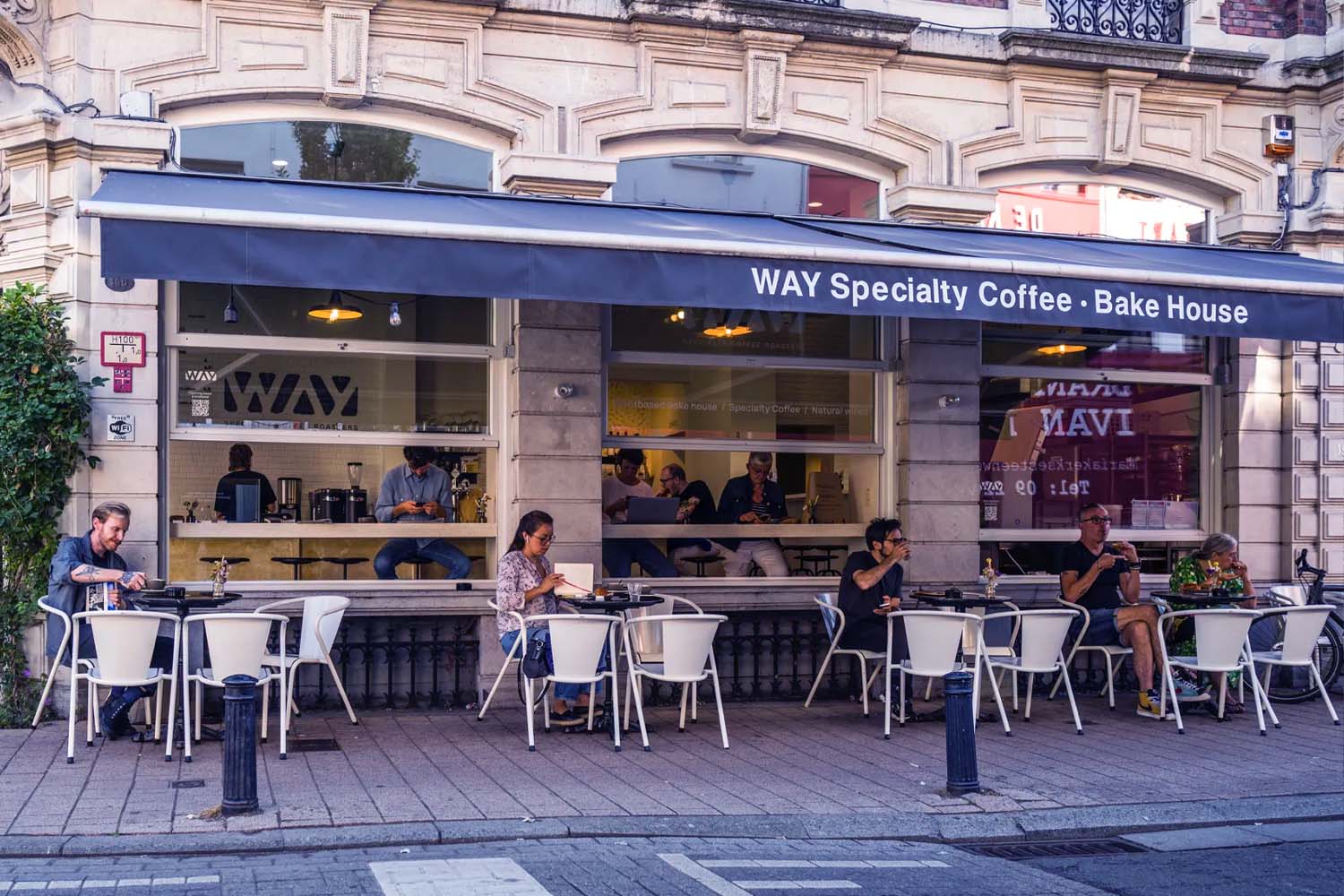
Day 6: Ghent

Coffee: WAY Plantbased Bakehouse
During our time in Ghent, we went to WAY Plantbased Bakehouse numerous times. The coffee is excellent. Uniquely flavored pastries such as butternut croissants, carrot danish, and lychee-rose tarts are the perfect complement to a pour-over or frothy latte. The vegan sausage roll will surprise even the most devout meat eaters. (Pro tip: the natural wine starts flowing later in the afternoon.)

Do: The Graslei
Calling the Graslei photogenic doesn’t quite capture its beauty or significance. This harbor hub has welcomed docking ships since the 11th century. The ornate guildhall façades still enchant tourists and locals who stroll along the riverside pathways, snap photos and kick back with a Belgium beer on one of the many café terraces. There’s also a beautiful bridge called Grasbrug around the corner from the Korenmarkt that offers lovely views of the entire area. A boat ride is another way to soak in the postcard-worthy surroundings.

Eat: knol&kool
A cool market-cafe-restaurant hybrid with an atrium glass ceiling and sleek furnishings, knol&kool very much fits Ghent’s more contemporary aesthetic and veg-forward eating preferences. While perusing the menu — which ranges from fluffy buckwheat pancakes with berry coulis for breakfast to lunchtime staples like club sandwiches and tomato soup — you might not even realize it’s vegan. The pastries and cakes are delicious, too.

Do: STAM – Ghent City Museum
Small, interesting and easy to navigate, the glass-panes STAM – Ghent City Museum takes visitors through the history and development of the city. The huge floor map installation that occupies an entire room ranks as a highlight for many visitors (myself included).

Eat: Mémé Gusta
Sometimes you just walk into a place and it feels like home. Mémé Gusta resembles a well-loved house with vintage wallpaper, framed portraits, sofas and a spiral staircase. The comforting food very much fits the energy of the cozy space. Expect cheese croquettes, vol-au-vent and beef stew (there’s also a vegan version of the latter because, well, it’s Ghent).
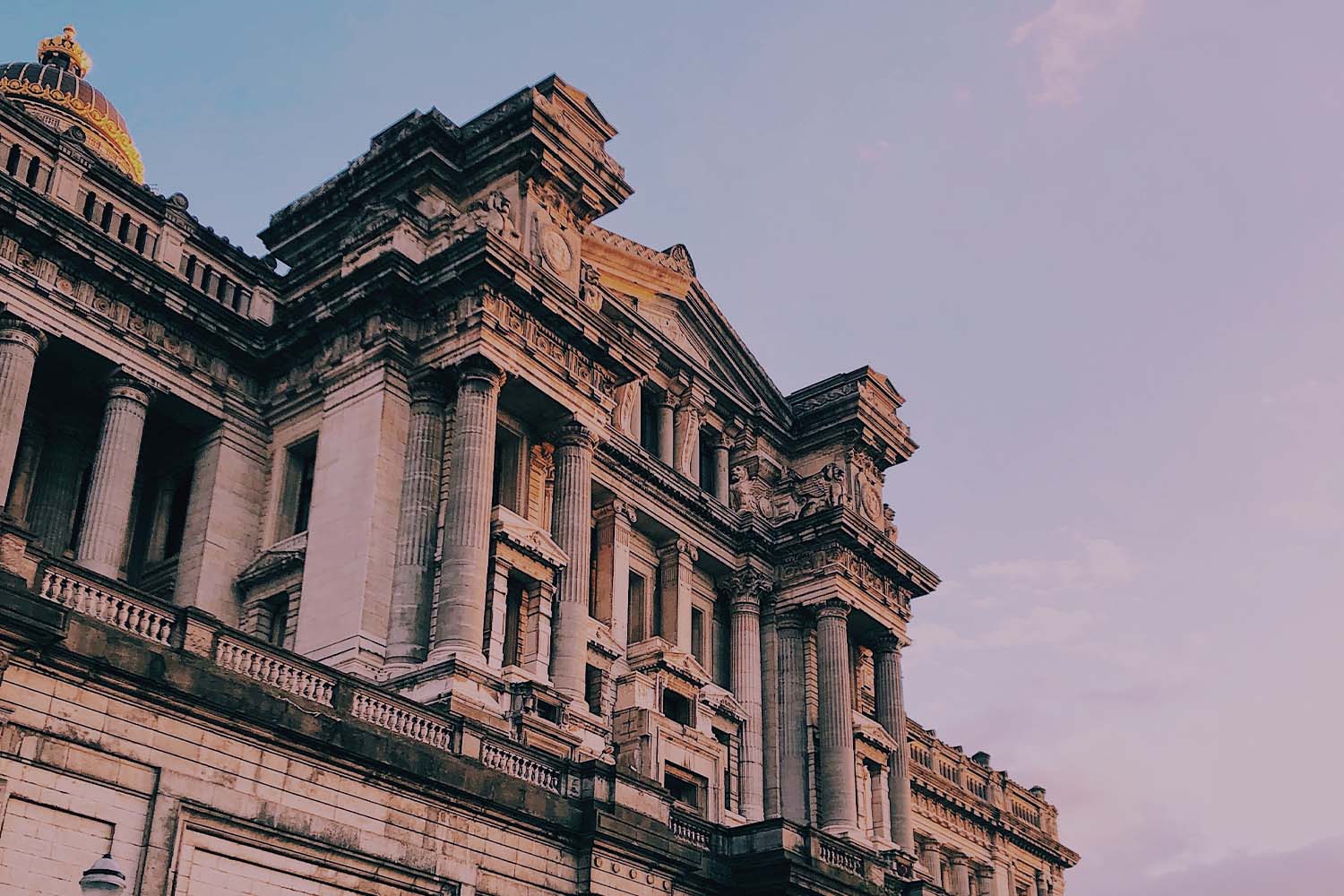
Day 7: Brussels

Coffee: Bouche
Brussels has a really superb cafe scene. One of my favorite cozy spots to grab a cup of joe — and, sure, a pastry, too — is Bouche. The warm atmosphere and specialty coffee just make it the perfect place to caffeinate before a day of sightseeing.

Do: Grand-Place
The most photogenic spot in Brussels? The Grand-Place. The Brabantine Gothic-style Town Hall dazzles visitors with its beautiful exterior and hosts guided tours of the interior. Pivot your camera toward Maison des Ducs de Brabant, an ensemble of seven houses hidden behind a singular neoclassical facade, and then applaud the ornate Maison du Roi, which houses the Museum of the City of Brussels.

Eat: Wolf Sharing Food Market
As the seat of the European Union, Brussels is a very international city. So it’s super fitting to be able to eat your way around the world in a single sitting at Wolf, a modern take on a food hall with stalls ranging from Lebanese to Thai, plus beer, wine and cocktails, and communal tables for enjoying it all.

Do: Royal Museums of Fine Arts of Belgium
It’s impossible to pack all of the city’s cultural institutions into a single trip (let alone one day). I would prioritize the Royal Museums of Fine Arts of Belgium. It’s enormous, fascinating and just a beautiful building collection notwithstanding.

Chocolate: Passion Chocolat
Obviously, you’re not going to leave Brussels without grabbing some chocolate to eat now and bring back as souvenirs (if they don’t get gobbled up on the plane). Passion Chocolat is a small-scale operation that’s well-regarded for making 70 different types of artisanal pralines, ganaches and truffles.

Eat: Nüetnigenough
The best way to cap off a trip to Belgium? Classic Felmish fare. Nüetnigenough is an atmospheric dining room restaurant inside an old house that serves traditional dishes like beef stew that pair perfectly with the impressive selection of local and regional beers. No need to navigate the extensive list alone, just ask the knowledgeable team to make a recommendation.
This article was featured in the InsideHook newsletter. Sign up now.
